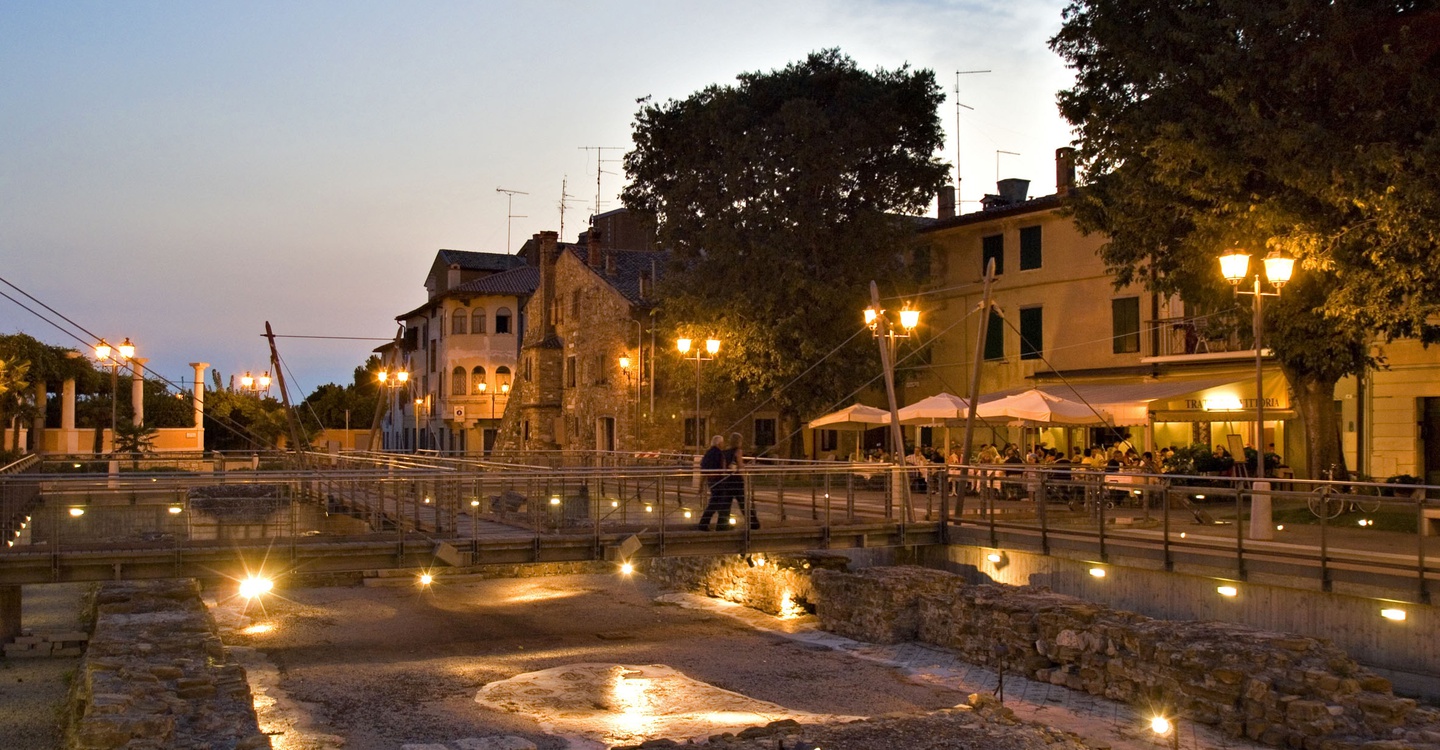Initially named Piazza della Corte and then Piazza Vittoria, this vast town square, stretching to the southern edge of Grado's historic centre, was renamed after Biagio Marin, a poet, writer and man of more than just local literature and culture. His birthplace stands next to the Basilica of Santa Maria delle Grazie, whereas his final home lies close to the sea, a regular theme in his poetry collections, written mainly in the dialect of Grado. Some tragic events marked his long life throughout the 20th century. He fought in the First World War and lost his son, Falco, during the Second World War. Today, his son is commemorated in the name of the island's library. Born in Grado under the Hapsburgs, Biagio Marin studied in Gorizia, Pisino and Vienna, which belonged to the Habsburg Empire, but also in Florence, and later worked successfully in the cultural environment Venezia Giulia, under the Kingdom of Italy. In the early 1920s, he taught in Gorizia using completely innovative methods for his time, which forced him to eventually leave the town. He then returned to his roots and became the longstanding director of the Seaside Resort Authority of the time, after which he lived for many years in Trieste where he took up teaching again. He was librarian for Assicurazioni Generali and helped found the local Cultural and Arts Circle, which later made him Honorary President. The University of Trieste awarded him an honorary degree for his literary work. He died at over ninety years on his "Golden Island", closing a controversial life made of criticism and clashes due to his bad temperament. Nevertheless, he also received prestigious literary awards throughout his life, and was appreciated and held in high esteem in the world of culture and the press. Among his supporters there was Pier Paolo Pasolini, whose tragic death was the subject of Biagio Marin’ book “El critoleo del corpo fracassao” ("The creaking of the shattered body"), and Claudio Magris, who paid him homage writing "I owe much of who I am to you" in a letter to Biagio Marin.
But let's go back to the town square and turn our attention to the "House of Music". This building on the corner is one of the oldest in old Grado, built over the centuries on a stretch of the Castrum walls. Its name recalls when it was the town band’s headquarters under the Hapsburgs. After a full accurate restoration, it now hosts historic and artistic exhibitions and cultural events.
The flooring before the "House of Music" shows the perimeter of the Early Christian octagonal baptistery of the old Basilica della Corte, the remains of which can be seen in the impressive excavation area occupying much of the square. There you can see the old wall structures, fragments of a mosaic floor and some sarcophagi in the area behind the ancient façade, which was once a cemetery. Like Santa Maria delle Grazie and Sant'Eufemia, this is a standard layout church with the altar in the east, where the sun rises and the entrance to the west, where it sets: symbolically, worshippers leave darkness behind them as they enter and walk towards the light of their faith. Grado's third basilica also went through different phases until it was destroyed, perhaps by fire, and was finally abandoned between the 8th and 9th century. Some experts believe the church and baptistery were dedicated to the Aryan cult for a certain period in antiquity.
The area has been made accessible via glazed walkways with steel pulley, which make it more visible and create a successful combination between ancient and modern.
In the south-west corner of the square, where a block of flats now stands close to the seafront, there used to be a Napoleonic blockhouse. Its demolition in the early 20th century brought to light some Early Christian remains, whose excavation had already started under the Austrian Empire. It is interesting that the block of flats was built on the former "Pension Fortino", which belonged to the family of Josef Maria Auchentaller. This man was a famous Austrian artist and a member of the Vienna Secession, who helped bring fame to Grado as a tourist destination for Central Europe, as he lived and painted on the island and had famous acquaintances such as Otto Wagner, also a guest at the "Fortino".
